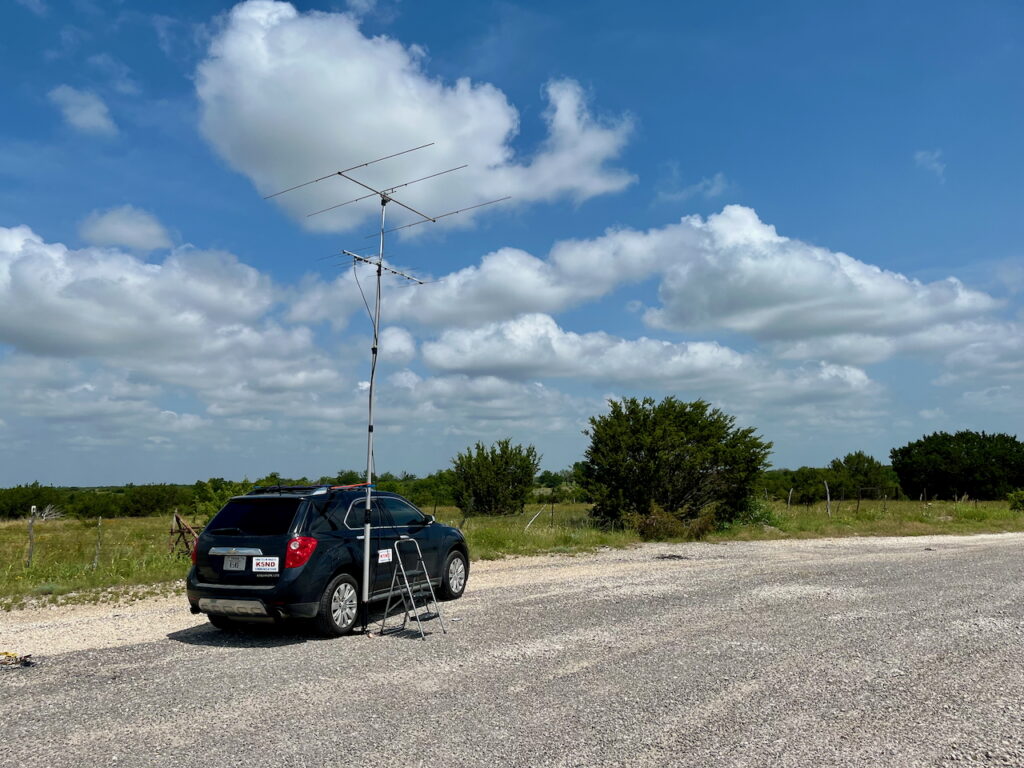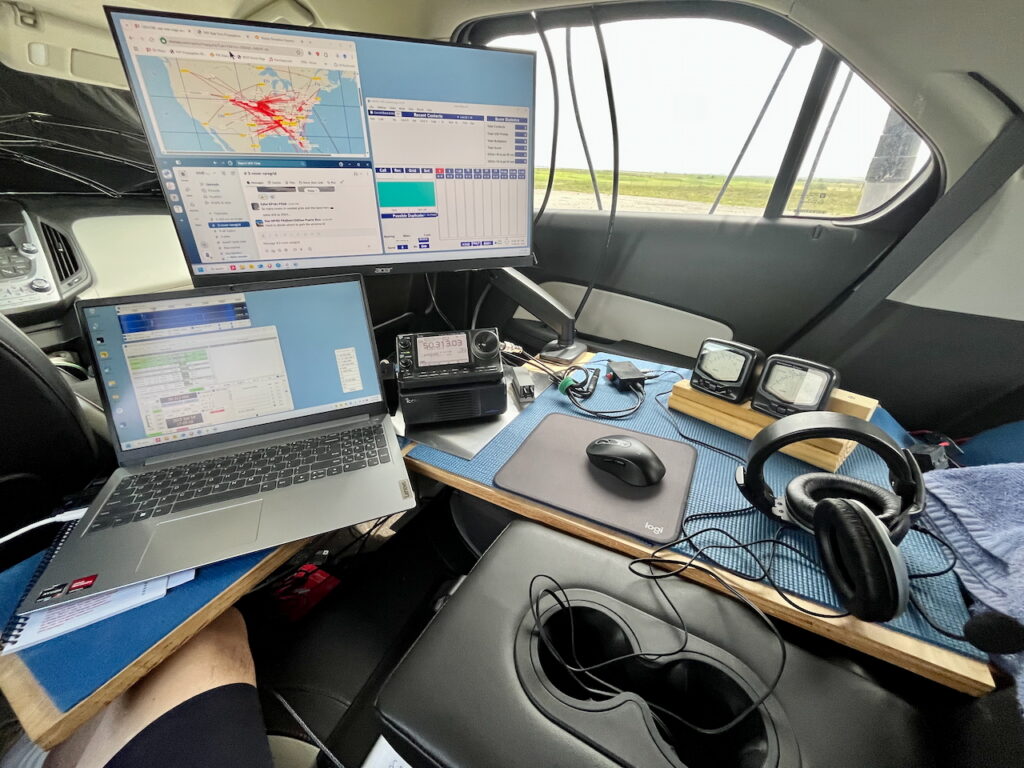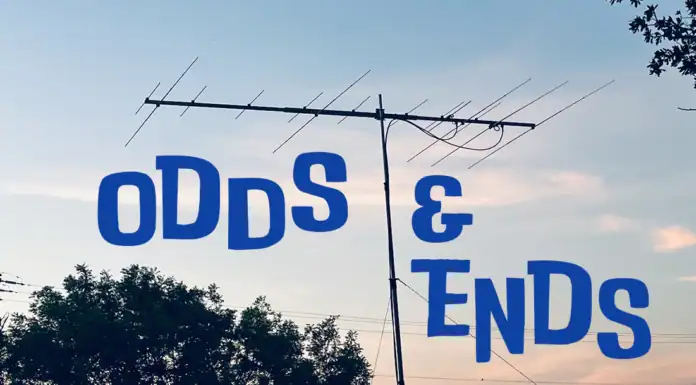The ARRL June VHF contest typically offers numerous QSOs, with seasonal Sporadic E propagation facilitating long-distance QSOs on 6 meters. That’s what I experienced during my Single Op Portable operation in EM01 until the thundershowers arrived on Sunday afternoon, dampening my enthusiasm. Here’s my story.
My Contest Story and Overall Activity Levels

After slogging through the September VHF and January VHF contests with low activity levels, it was truly exciting to see WSJT-X light up with QSOs everywhere. I tried some SSB and successfully made a few contacts. I also explored CW, after putting in a special effort to set up a Winkeyer, but I’m just too rusty when it comes to decoding in my head.
AG6EE QSO for FFMA Grid #486
FT8 was in full swing when I tuned up at the 1 PM contest start. At that point, it was all West Coast stations. I worked quite a few, and then I saw AG6EE on the air from DN01/DN00 on 6 meters. I answered his CQ with my 10 watts, and he responded! I cranked up to 80 watts and completed the QSO quickly. DN00 is #486 in my Fred Fish Memorial Award chase.
VUCC Award Location Update
On the Friday before the contest, Petr, AG6EE, announced that he planned to activate DN01/DN00. That doesn’t happen very often, and I was bummed that I wouldn’t be home. However, I also realized that the VUCC location rules permit award “locations no more than 200 km apart.” The distance between my home at EM12kv and my portable location at EM01wv is 145.5 km. So, I’m in luck.
I have now updated my VUCC station location in the Logbook of the World to include operations from both EM12kv and EM01wv. Additionally, as predicted, the QSO from AG6EE for #486 is confirmed and applied to both VUCC and FFMA awards.
Cabrillo Log Submission Update
For the contest, I edited the Cabrillo Log file that I submitted to add an X- before the AG6EE QSO. According to the Cabrillo formatting rules, this will cause that QSO to be ignored in my log but will give credit to the other station’s log. In this way, all the QSOs in my contest log will comply with the 10-watt power limitation for the Single Op Portable category.
West Coast then East Coast on Saturday
Back to my contest activity report. The West Coast run lasted until about 4 PM when I noticed more East Coast stations in the waterfall. By 5 PM, I turned the antennas east and started working those stations. It got so busy that around 6 PM I was getting nearly 50 decodes on every sequence.
I then had an eyeball QSO with Melissa, KM5R, who spotted me alongside the road and stopped in. She lives further south in EM01 but doesn’t enter contests at the moment. It was nice to share what I was doing with a knowledgeable operator.
By 8 PM, the activity level had died down enough for me to close up shop. At this point, I had 142 QSOs and 104 multipliers in the log.
I had dinner in Hico and spent the night at a motel; I won’t comment on the quality of the accommodations.
Sunday Morning Activity, Afternoon Rain, Early Exit
I was up at 5 AM, found a donut shop for coffee, drove out to the site, and set things up once more. You can see a photo of the sunrise at the top of this post.
I was on the air by 7 AM and tried a few MSK QSOs but didn’t make many contacts. Then, activity on FT8 6 meters picked up again. There were stations from both the East and West Coasts, so I turned the antenna a few times. I also logged several 6 m QSOs from Mexican stations and a few from Canada. By noon, I had 226 QSOs and 145 multipliers.

That’s when a storm front came through with winds and rain. I lowered the antenna mast and, after the first thunder, disconnected everything. It cleared up around 1 PM, and I tried to work some more stations. However, by that time, the propagation to Central Texas had essentially died. So, I decided to pack up and head home. I noticed that propagation picked up once again later in the contest. I wish I’d stayed around, but I was pretty beat by the time I did leave.
June VHF Single Op Portable Score
The score came in at a reasonable level. Had I stuck around through the limited propagation Sunday afternoon, I probably would have been able to score higher.
- 6 meters, 218 QSOs, 132 grids
- 2 meters, 12 QSOs, 10 grids
- 70 cm, 6 QSOs, 6 grids
That made for 236 QSOs and 148 grids for a score of 35,520 points. Of course, there will be some deductions after log checking. But overall, I didn’t have too many QSOs that weren’t completed.
Single Op Portable Operating Tip – Call CQ
I saw a comment from N0JK about his brief portable operation, mentioning that he had trouble getting anyone’s attention. That’s certainly been the case with my portable operations as well. After all, 10 watts into a low antenna isn’t the loudest signal on the band.
My main operating tip is to avoid calling other stations. Instead, I send CQ and hope for the best. When the band is open, this approach mostly works. Additionally, if a station responds to my CQ, it indicates that they can hear me, giving us a better than even chance of completing the QSO. However, this doesn’t always happen when the band drops out to that station. For the most part, though, this method works well for me and reduces my frustration level.
Of course, when the bands are in poor condition, you’ll be forced to call the few stations you can hear. I did this quite a bit on 144 MHz and 432 MHz. There weren’t many stations heard there during this contest, so I had to call them when I could hear them.
I also found that when trying SSB QSOs, I wanted to tweak the antenna to bring in stations that I could barely hear. Unfortunately, that would have meant running out to the mast, twisting it slightly, and then hoping that was the right direction and the right amount of twist. I guess that’s why FT8 is so popular; it works even at very low signal levels.
VHF Single Op Portable Setup
You can see the setup in the nearby photo. Not much has changed since the January VHF Contest. I purchased a second MaxGain Systems push-up mast for portable operation, so I don’t have to dismantle everything at home.

I added a Winkeyer, hoping to log CW QSOs. However, I really need to improve my decoding skills to make it effective. I think I should practice a bit first before implementing everything for the upcoming CQ WW VHF Contest, which features an analog-only weekend. I’ll be in DM85 for that one.
I updated my AC inverter. I saw one at a hamfest flea market and realized that my inverter is about 15 years old and should be replaced, keeping the old one as a backup option. A quick Amazon search yielded just the right pure sine wave inverter.
The IC-7100 works great, and the Diamond wattmeters help me ensure I don’t exceed the 10-watt limit. The antennas continue to perform well and withstand some abuse, being strapped to the top of the car during transport, followed by my fumble-fingered assembly.
Thank you to everyone who found my signal, overcame any challenges, and logged my QSO. And, thank you, Petr, AG6EE, for yet another new grid on my FFMA chase.
Update October 2025. Woo hoo! I managed to win the Single Op Portable category.








Nice writeup. After reading this, I think I made a tactical error by not working the cw end of the 6m band. I figured that I’d get the best rate running phone. When that slowed down, I switched to FT4, worked those stations, then back to phone. Stayed entirely off FT8 since conditions were so good. I was busy, but probably missed a lot of points by ignoring cw.
I learned the code when I was a teenager, used it for about a year, then it went dormant for multiple decades. I decided to get it back late last year. Practice almost every day on LWCO, Morse Runner, and since late spring been doing the CWops sprints on Wed night. Can now copy the quick contest exchanges at 35 wpm. Yes, it’s harder for us seniors but it can be done, just takes time and commitment.
Hi Mike, My tactical error was not checking on FT4 when 50.3l3 was over-packed with signals. At home, I watch the SDR display and can find FT4 or even 50.323 in action. But it completely slipped my mind to check. And, yes, I need to do some CW practice. The CQ WW VHF SSB/CW contest is coming very soon, on July 5. I’ll be in DM85 for a few days and may take part in that contest.
I look forward to seeing you at the Central States VHF Conference. 73, Jim, K5ND